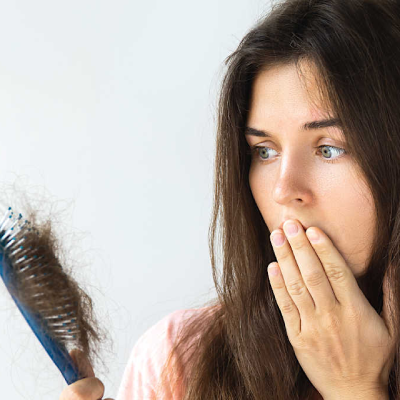Why does Hairline Design Matters Most in Hair Transplant?

18 April 2024

drgarg

In India, hair transplantation has become the cutting-edge treatment for baldness. However, obtaining a natural-looking result depends on the surgical method used and a critical pre-operative phase called hairline design. This blog explores the importance of hairline design in hair transplant surgery, with a focus on educated Indian readers who are looking for the greatest outcomes.
Why Does Hairline Design Matter?
A successful hair transplant depends on having a well-planned hairline restoration. It serves as the final result's general appearance and naturalness, acting as the architectural blueprint. This is why it needs to be given top priority:- Aesthetics and Framing the Face The hairline, as the main facial frame, greatly impacts the face's balance and proportions. Unnatural hairlines in shape, density, or placement can appear prickly and negatively impact the face's overall harmony. A talented plastic surgeon carefully constructs a hairline that perfectly matches each client's unique aesthetics, considering specific facial traits such as forehead size, facial width, and preexisting hair growth patterns.
- Mimicking Natural Hair Growth There's no uniformity to a natural hairline. It shows minor differences in the density and development direction of hair. A well-crafted hairline restoration replicates these organic features. This involves adding matured hairline traits such as temporal peaks (receding corners) and uneven distribution to ensure that the transplanted hair blends perfectly with the surrounding hair.
- Long-Term Sustainability The condition of hair loss is gradual. A well-planned hairline takes patterns of future hair loss into account. This guarantees that even if the natural hairline recedes more, the transplanted hairline will continue to look natural. The hairline is designed by skilled surgeons at AHS India, considering future hair loss to ensure a long-lasting and sustainable outcome.
Extended Hairline Region: What is it?
The extended hairline region refers to the area beyond the immediate visible hairline. This zone is essential to achieve a result that is age- and naturally-appropriate. How to do it is as follows:
- Recipient Area Considerations The transplanted hair follicles are positioned in the recipient region beyond the apparent hairline. This allows the hair density in the transplanted area to convert into the local hair already present gradually. A natural hairline expert surgeon integrates the enlarged hairline area to produce a realistic and seamless gradient of hair density.
- Planning for Future Procedures The enlarged hairline region can be a valuable "donor bank" for future hair transplant treatments if necessary. By carefully planning the recipient area, future surgeries can use hair follicles from this location, lessening the impact on the original donor area at the back of the scalp. Surgeons at AHS India are skilled in optimising follicular units and considering future procedures and surgeries.
Factors to Consider While Hair Transplant Design
A sophisticated strategy that takes into account numerous elements unique to the Indian audience is necessary for a good hairline design in that country:- Facial Features and Ethnicity Indian and Caucasian facial structures are frequently different. An expert surgeon must be well-versed in these variances and adept at creating hairlines that accentuate Indian facial features. For example, Indian hairlines are softer and rounder than Caucasians, who typically have more angular shapes. The surgeons at AHS India have extensive training in creating hairlines that complement Indian facial features.
- Hair Quality and Texture In general, Indian hair is coarser and denser than that of other ethnicities. To produce a natural result, the design must consider this increased density. This could entail arranging follicular units in a certain way to attain the required fullness without looking disproportionately plump. The speciality of AHS India is exacting follicular unit insertion techniques that maximise density for Indian hair types while preserving a natural look.
- Age and Potential Future Hair Loss India has a wide range of hair loss patterns based on heredity and age. The surgeons at AHS India should consider the patient's age at the time of the design and the possible course of future hair loss. This guarantees that even when the natural hairline recedes more, the transplanted hairline will be balanced and visually beautiful. The surgeons thoroughly assess the patient's hair loss trend and build the hairline, considering any age-related developments.
Call AHS for Quality Hair Treatments
Hairline design is essential to a successful and natural-looking hair transplant; it is not only a cosmetic choice. It is a top choice with vast experience creating hairlines, especially crucial for Indian audiences. AHS India has a group of exceptionally talented and educated surgeons who painstakingly create hairlines that accentuate unique face characteristics, hair types, and ethnicities.We at AHS India are aware of the particular worries our Indian audience has regarding hair loss. We value a thorough consultation process examining your long-term aspirations, hair type, and aesthetic goals. Our surgeons use their training and experience to create a personalised hairline that looks good and feels natural. Book a consultation at the AHS hair transplant clinic today!
Stay Updated
Subscribe to our email newsletter for helpful tips and valuable resourses
Be an influencer
Join forces with Advanced Hair Studio! Explore exciting collaboration opportunities tailored for influencers. Let's redefine haircare together.
Connect now












